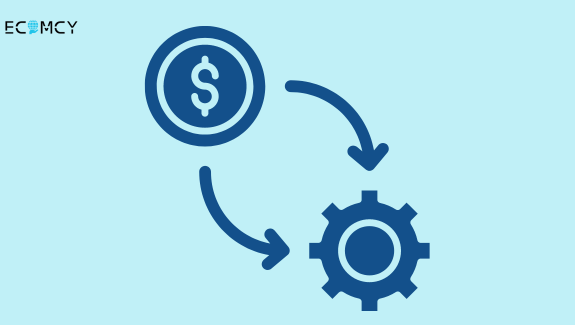April 14, 2024

In the fast-paced world of e-commerce, sellers are constantly seeking ways to stand out in the crowded marketplace and drive sales. One strategy that has proven highly effective in capturing shoppers' attention and boosting revenue is leveraging Amazon Lightning Deals. These limited-time, high-discount offers can significantly impact sales, visibility, and brand reputation for sellers on the Amazon platform. In this comprehensive guide, we'll explore the effects of Amazon Lightning Deals on sales potential, strategies for maximizing their effectiveness, and tips for success in running successful Lightning Deals campaigns.
Understanding Amazon Lightning Deals
Amazon Lightning Deals are time-bound promotions that offer shoppers significant discounts on select products for a limited period. These deals are featured prominently on Amazon's website and attract high visibility from millions of shoppers browsing for deals and discounts. Lightning Deals typically last anywhere from a few hours to a full day, and they are available on a first-come, first-served basis until the deal inventory runs out or the time expires.
The Impact of Lightning Deals on Sales Potential

The influence of Amazon Lightning Deals on sales potential is profound, extending beyond immediate revenue gains. Here are eight ways Lightning Deals positively impact sales and revenue for sellers:
Lightning Deals are prominently showcased on Amazon's Deals page, significantly enhancing the exposure and visibility of participating products. This prime placement attracts a larger audience of shoppers actively seeking discounted offers, thereby increasing the likelihood of product discovery and engagement.

Lightning Deals' time-sensitive nature creates a sense of urgency and scarcity among shoppers, compelling them to act swiftly to capitalize on the limited-time offer. This urgency often translates into higher conversion rates as shoppers are motivated to purchase before the deal expires, resulting in a surge in sales for participating products.
Lightning Deals attracts a diverse range of shoppers, including bargain hunters, deal seekers, and impulse buyers, who may have yet to consider purchasing the product at a total price. By offering a compelling discount through Lightning Deals, sellers can tap into new customer segments and expand their customer base, driving incremental sales and revenue.
Lightning Deals' spike in sales velocity can positively impact a product's ranking on Amazon's search results pages. Increased sales volume and conversion rates signal to Amazon's algorithms that the product is popular and relevant to shoppers. This leads to improved organic visibility and placement in search results, further amplifying sales potential.
Participating in Lightning Deals can elevate a seller's brand perception by positioning them as offering high-value, discounted products. Shoppers associate Lightning Deals with exclusive offers and exceptional value, which can enhance brand reputation and credibility. Positive experiences with Lightning Deal purchases can foster customer loyalty and advocacy, driving long-term sales growth.

Lightning Deals provide sellers with a strategic avenue to clear excess inventory or liquidate slow-moving products. Sellers can effectively incentivize purchases and expedite inventory turnover by offering steep discounts on these items for a limited time, freeing up valuable warehouse space and capital for new products or seasonal inventory.
Lightning Deals allow sellers to cross-sell or upsell related products alongside the featured deal. By bundling complementary items or offering discounts on additional purchases, sellers can increase the average order value and maximize revenue potential during the Lightning Deal event.
Lightning Deals generate valuable data insights into customer behavior, preferences, and purchasing patterns. Sellers can analyze sales data, customer feedback, and engagement metrics to refine their marketing strategies, optimize product offerings, and tailor future Lightning Deals campaigns for greater effectiveness and impact.
Strategies for Maximizing Lightning Deals Effectiveness
To maximize the effectiveness of Lightning Deals and unlock their full sales potential, sellers can implement the following strategies:
Carefully select which products to feature as Lightning Deals based on popularity, profitability, and excess inventory. Focus on products with high demand and healthy profit margins to maximize the Lightning Deal's impact on overall sales and revenue.
Choose the timing of Lightning Deals strategically to align with peak shopping periods, holidays, or other events when consumer demand is high. By launching Lightning Deals during these opportune times, sellers can capitalize on increased shopper traffic and maximize sales potential.
Create compelling and visually appealing deal presentations that attract shoppers' attention and encourage them to click through to the product page. Use high-quality images, clear and concise product descriptions, and persuasive messaging to entice shoppers to take advantage of the Lightning Deal offer.
Ensure sufficient inventory levels are available to fulfill orders during the Lightning Deal. Overestimating or underestimating inventory levels can result in missed sales opportunities or fulfillment challenges, so it's essential to forecast demand and manage inventory accordingly and accurately.
Promote Lightning Deals through various channels, including social media, email marketing, and Amazon Sponsored Products ads, to maximize visibility and reach a broader audience of potential customers. Leverage Amazon's built-in promotional tools and features to amplify the reach and impact of Lightning Deals campaigns.
Tips for Running Successful Lightning Deals Campaigns
Running successful Lightning Deals campaigns requires careful planning, execution, and optimization. Here are some tips for sellers looking to run successful Lightning Deals campaigns:
Plan Lightning Deals campaigns well in advance and allocate sufficient time for preparation, including selecting products, setting up deals, and coordinating inventory management and logistics.
Monitor key performance metrics such as sales volume, conversion rate, and click-through rate throughout the Lightning Deal. Use this data to assess the deal's effectiveness and make data-driven adjustments to optimize performance.
Respond to customer feedback and reviews related to Lightning Deal products. Address any concerns or issues promptly and proactively to maintain customer satisfaction and preserve brand reputation.
Evaluate the return on investment (ROI) of Lightning Deals campaigns by comparing the cost of participating in the deal (e.g., discount offered, promotional fees) with the resulting increase in sales revenue. Use this information to inform future decision-making and allocate resources effectively.
Continuously iterate and improve Lightning Deals campaigns based on performance data, customer feedback, and market trends. Experiment with different product selections, deal durations, and promotional strategies to identify what works best for your business and maximize sales potential.
Conclusion
In conclusion, Amazon Lightning Deals offers sellers a powerful tool for unlocking sales potential, increasing visibility, and enhancing brand reputation on the Amazon platform. By strategically selecting products, optimizing deal timing, creating compelling deal presentations, managing inventory effectively, and promoting deals through various channels, sellers can maximize Lightning Deals campaigns' impact and drive sales and revenue. With careful planning, execution, and optimization, sellers can unleash the full sales potential of Amazon Lightning Deals and elevate their e-commerce business to new heights.
Comments will be approved before showing up.

WANT TO STAY AHEAD OF THE COMPETITION ?
Subscribe to stay on top of the best strategies in the field of Amazon & Walmart